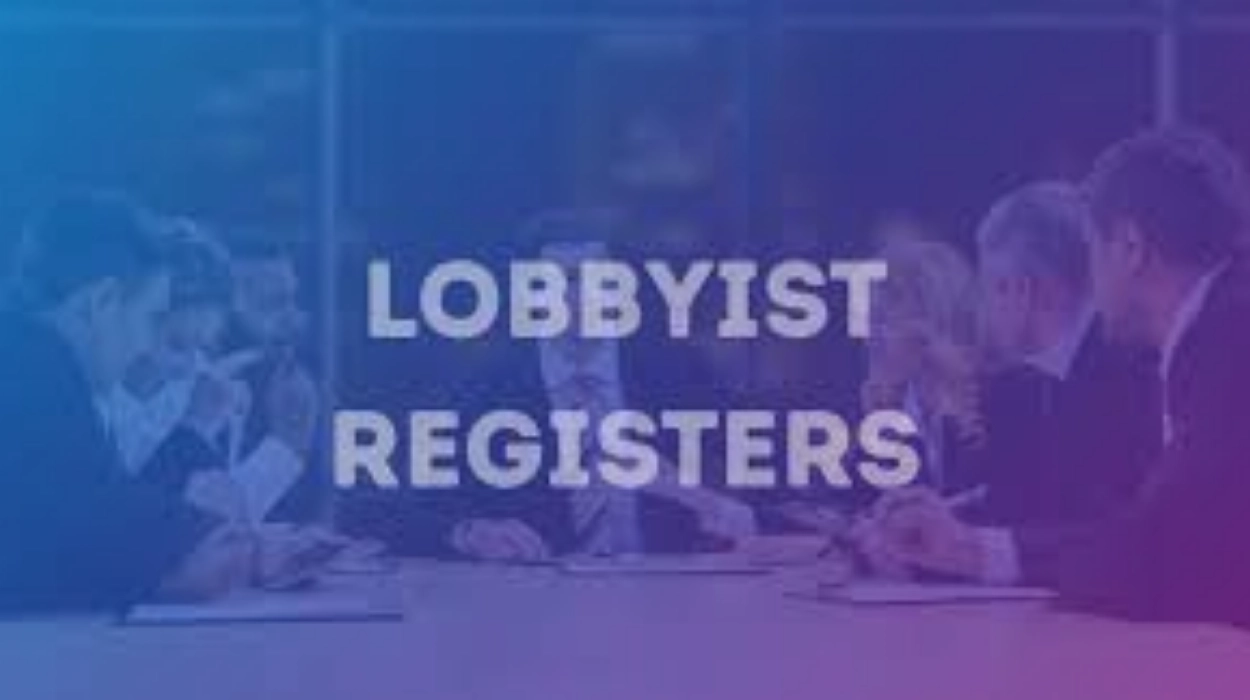According to the law, a registered lobbyist refers to an individual or a group interested in trying to affect the officials of the people by use of official communication, and it has to be reported publicly when specific thresholds are reached.
The United States Lobbying Disclosure Act (LDA) has been revised in 2025, and the current standard of the act remains that any citizen who has more than one lobbying contact with a covered official and spends a minimum of 20% of his or her time working on lobbying activities during a three-month time frame must be registered. To lobbying firms a registration is initiated when the income to a client is more than $3,500 per quarter whereas an organization is registered when expenses are more than 16,000. This framework requires transparency of people who are the most actively engaged in policy-making. Registration will entail detailed description of clients, legislative or regulatory problems and financial expenditures.
The officials covered comprise the members of the congress, senior executive branches, other top federal policymakers. Elsewhere, the meaning of the terms follows the same definition, but to a different scale. Consultant lobbyists in the United Kingdom are required to be registered provided that they interact with ministers or top civil servants in the case of one party. Conversely, in-house lobbyists representing their employers can be exempted by the registration regime unless their impact is per the set requirements. They also have country-specific lobbyist registries in countries like Canada, Australia and Ireland, disclosed with different thresholds and disclosure policies as they relate to local governance.
Registration and Disclosure Requirements
The registration systems of lobbyists are aimed at making the political influence traceable and open. Lobbyists must file periodic reports of their activities after registering. The U.S. quarterly reports would also require a list of issues that were lobbied, individual bills or regulations, the federal agencies or offices contacted, and the amount of money spent on lobbying. The names of individual lobbyists, the related organizations and the beneficiaries of the advocacy shall be given.
Bundling regulations have extra demands. By 2025, any registered lobbyist that engages in bundling political contributions exceeding $23,300 to a candidate or a political committee shall reveal the amount as well as the sources of such contributions. The purpose of this rule is to avoid financial influence to go around conventional boundaries by pooling donations via proxies.
The countries such as Canada and Australia also require elaborate financial breakdowns and meeting schedules with the government officials. Registries are publicly available, and the civil society, as well as the media, can question the lobbying activity and track possible conflicts of interest.
This is because failure to meet these obligations can attract penalties. In the U.S. contraventions can result in a fine to the tune of up to 200,000, and criminal charges in the case of knowing and wilful infractions. These legal tools enhance the accountability component of lobbyist registration besides emphasizing the importance of disclosure in ensuring the integrity of democracy.
Challenges in Modern Lobbyist Registration
The regulatory models, even though all inclusive on paper, run into real world constraints. A huge problem is posed by complicated registration requirements and exemptions which cause ambiguity, especially to a smaller company or an organization that is involved in part-time advocacy. A basic contact on the legal definition of what a lobbying contact is or the calculation of time of lobbying may be inconsistent and therefore may cause gaps in reporting.
Complete compliance is also discouraged by the administrative burden. There are stakeholders who complain that the paperwork and frequency of updates are cumbersome to some stakeholders, particularly those in multi-client lobbying firms and therefore calls have been made to automate or simplify the process of reporting.
The arena of lobbying is also changing at a very high rate. Lobbying does not always mean the use of digital and indirect forms of advocacy, such as social media campaigns with specific target audiences, AI modeling of policy, and informal influence on issues through think tanks or interest groups. These new methods are capable of forming the perception of the population and policymakers without setting off the effects on the registration, and creating the regulation blind spots.
Moreover, lobbying via professional circles, retiring government workers, or consultancies working on the issue of strategic communications can be completely unquestioned. This is a weakness according to critics because it compromises the spirit of transparency laws because nobody can actually be influential outside the formal registry systems.
Diverse Stakeholder Perspectives on Registration
Even lobbyists tend to advocate registration as a principle in itself, as a sign of professionalism and legitimacy. According to many industry practitioners, transparency also brings about trust and helps to separate wholesome advocacy and influence that is covert. They also however warn of overregulation by stating that thresholds and definitions should not punish low-level engagement and incidental contacts.
Corporately, registration is frequently regarded as being in risk management. In the case of large companies having legal and compliance departments, compliance with disclosure regulations is commonplace. Nevertheless, small and medium enterprises or nonprofits tend to struggle with the interpretation of the rules, particularly when their advocacy activities have overlapping subjects with the public education or service provision.
The civil society organizations engage in lobbyism to ensure that the registration requirements are extended with a focus on ensuring that loopholes are closed. Others advocate the establishment of lower reporting limits and the expansion of the concept of lobbying to an indirect form of influence. According to them, gaps in registration leads to unequal access to power, especially where some actors are able to influence decisions and be closed to the masses.
Good governance is perceived by regulators and oversight bodies to be grounded on the registry system. They are still experimenting in technological improvements including open-source data systems and live tracking systems. These means assist in increasing accountability and giving better understanding of who lobbies whom and on what matters.
Technology, Disclosure, and the Future of Regulation
By 2025, various governments are testing AI-powered monitoring at this point to understand lobbying reports, highlight trends, and find anomalies. Such systems have the ability to cross-match campaign finance data, votes in the legislature, and statements in public and to provide warnings of possible inconsistencies or unreported lobbying influence.
The adoption of these technologies is an indication of a future where the process of lobbying is going to be proactive instead of reactive. Nevertheless, it can also begin to cast new perspectives on the matter of data privacy, information security, and the possible abuse of automated regulatory enforcement. The policymakers need to strike the right balance between the efficiency of digital oversight and the due process of the people under surveillance.
At the same time, there is poor international coordination. Lobbying transparency in the world has no standard and as such, lobbyists can utilize regulatory arbitrage across jurisdictions. Multinational corporations and global consultancies tend to be present in nations with little or no regulation, which makes it difficult to trace the transnational input to policy matters such as environmental regulation to digital governance.
The harmonization of registration systems, or at least raising their interoperability is a current debate in the OECD and in the European Union. Having a standardized disclosure could enhance transparency in situations where a decision taken by the policy makers in one jurisdiction may have a ripple effect in other jurisdictions.





